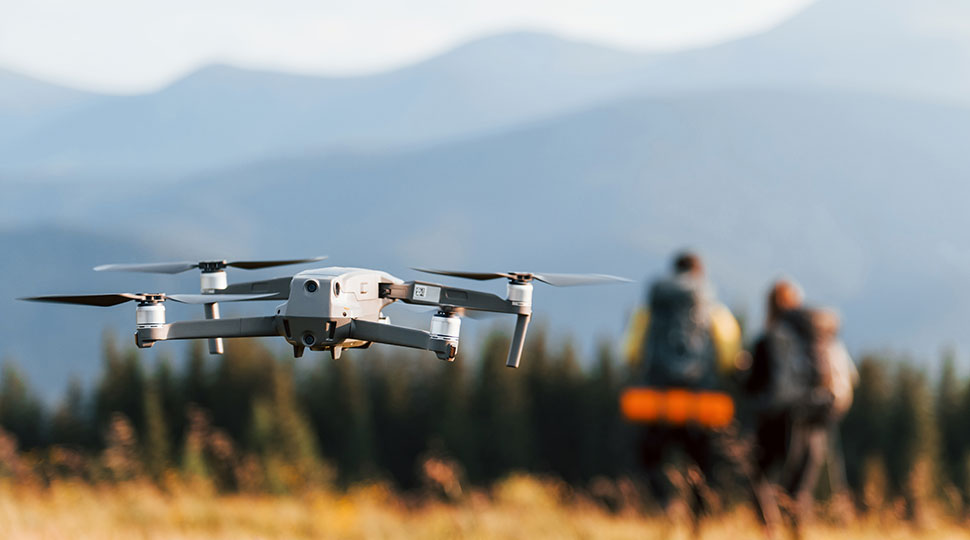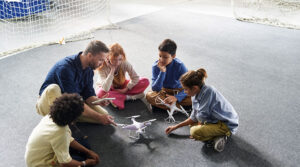Drone customization, or unlocking drone potential, is a rapidly growing trend among drone enthusiasts, hobbyists, and professionals alike.
With the increasing demand for customized drones, understanding how to supercharge your drone’s control system and user interface has never been more crucial.
As a definition, a drone is an unmanned aerial vehicle (UAV) that operates remotely or autonomously, typically equipped with cameras, sensors, and other payload capabilities. The benefits of customizing your drone’s control system and user interface are numerous, including improved flight performance, enhanced navigation capabilities, increased safety features, and personalized user interfaces.
Step 1: Understand the Basics of Drone Control System & User Interface
Components of a Drone Control System and User Interface
The drone control system is comprised of various components, including the flight controller, sensors, motors, propellers, and power supply. The user interface, on the other hand, refers to the software or hardware that interacts with the pilot or operator, providing real-time feedback and allowing for command inputs.
Understanding these components is essential for making informed decisions when customizing your drone’s control system and user interface.
A well-designed control system and user interface can significantly improve flight performance, stability, and overall flying experience.
Types of Drones (e.g., Commercial, Hobbyist) and their Associated Components
Commercial drones are designed for industrial applications, such as surveying, mapping, and inspection, and often feature advanced sensors, GPS systems, and ruggedized designs. Hobbyist drones, on the other hand, are typically designed for recreational purposes, such as aerial photography, racing, and freestyle flying.
Each type of drone has its unique components, software, and hardware, which can greatly impact the customization process. For instance, commercial drones may require more robust and reliable components to withstand harsh environmental conditions, while hobbyist drones may prioritize agility and maneuverability.
Step 2: Selecting Parts to Customize Your Drone’s Control System & User Interface
Researching parts for customization based on type/model/make of your drone
When selecting parts to customize your drone’s control system and user interface, it is essential to consider the specific requirements of your drone, including its type, model, and make. Different drones have unique design specifications, component configurations, and software capabilities that can affect the compatibility and performance of aftermarket parts.
For instance, if you own a DJI Phantom series drone, you may find that third-party flight controllers and propellers are readily available and optimized for your specific drone model. On the other hand, if you have a custom-built drone or an older model, you may need to search for more specialized or vintage components.
To research parts for customization, you can start by visiting online marketplaces, forums, and communities dedicated to drone enthusiasts and professionals. These platforms often feature reviews, tutorials, and discussions on various drone-related topics, including component compatibility and customization. You can also consult with other drone owners, attend workshops and seminars, or participate in online webinars to gain valuable insights and advice.
Choosing between aftermarket parts or DIY modifications
Once you have identified the necessary components for your customization project, the next step is to decide whether to opt for aftermarket parts or DIY modifications. Aftermarket parts are pre-assembled and tested components specifically designed for your drone model or type, often offered by reputable manufacturers or third-party vendors.
Aftermarket parts can provide numerous benefits, including improved performance, reduced risk of compatibility issues, and increased convenience. However, they may also come with higher costs and limited customization options.
DIY modifications, on the other hand, involve creating custom components from scratch using various materials and tools. This approach can be more cost-effective and flexible, allowing you to tailor your drone’s control system and user interface to specific requirements or preferences.
However, DIY modifications require a significant amount of expertise, patience, and time. You will need to invest in specialized tools, software, and materials, as well as develop the necessary skills and knowledge to ensure successful integration with your drone’s existing components.
Step 3: Installing the New Parts in Your Drone’s Control System & User Interface
Preparing the workspace
Before installing any new parts, it is crucial to prepare a dedicated workspace that minimizes distractions and ensures optimal working conditions. This includes clearing the area of any obstacles, securing your drone, and setting up necessary tools and equipment.
You should also take this opportunity to ground your drone using anti-static materials or a non-conductive surface to prevent damage from static electricity. Additionally, consider investing in a portable workbench or drone stand to keep your drone stable and accessible throughout the customization process.
Assembling all necessary tools
To ensure successful installation of new parts, it is essential to assemble a comprehensive toolkit containing various hand tools, precision instruments, and software utilities. This may include items such as screwdrivers, wrenches, pliers, wire strippers, soldering irons, and multimeters.
You should also consider investing in specialized drone-related tools, such as propeller removal tools, motor removal wrenches, or GPS antenna adapters. These components can significantly simplify the customization process and reduce the risk of damage to your drone’s delicate electronics.
Connecting new parts to existing setup
Once you have assembled all necessary tools and prepared the workspace, it is time to connect the new parts to your drone’s existing control system and user interface. This may involve disassembling components, replacing or upgrading individual parts, or reconfiguring software settings to accommodate the new hardware.
It is crucial to follow proper disassembly procedures to avoid damaging delicate electronics or compromising the structural integrity of your drone. You should also consult manufacturer instructions, online tutorials, or expert advice if you are unsure about specific installation procedures.

Testing out new control systems and user interfaces
After installing the new parts, it is essential to test your drone’s control system and user interface to ensure seamless integration and optimal performance.
This may involve conducting a series of flight tests, adjusting software settings, or fine-tuning component configurations to achieve desired results.
During this process, pay close attention to your drone’s response to various inputs, such as pitch, roll, and yaw. Monitor its stability, maneuverability, and overall flying characteristics to identify any areas that require further adjustments or calibration.
Cleared for Takeoff
Customizing your drone’s control system and user interface is a valuable investment that can pay dividends in terms of improved performance, enhanced safety, and increased enjoyment. Whether you’re looking to upgrade for recreational or professional purposes, this guide has provided you with the knowledge and tools necessary to take your drone to the next level.
So, what are you waiting for? Get creative, get customizing, and discover the full potential of your drone!








